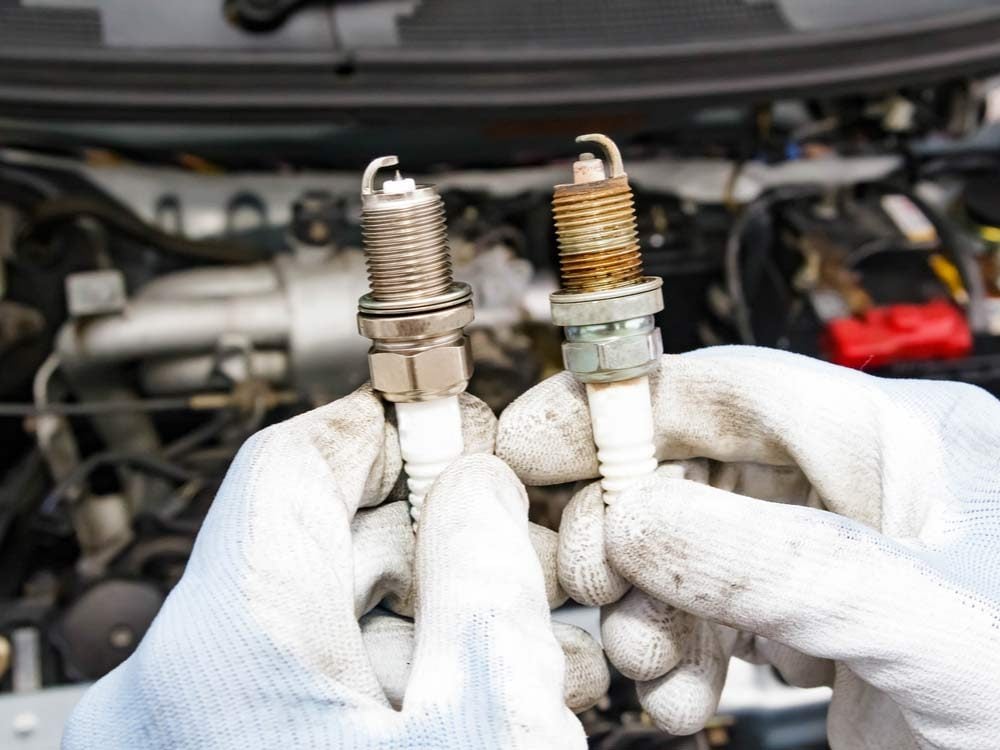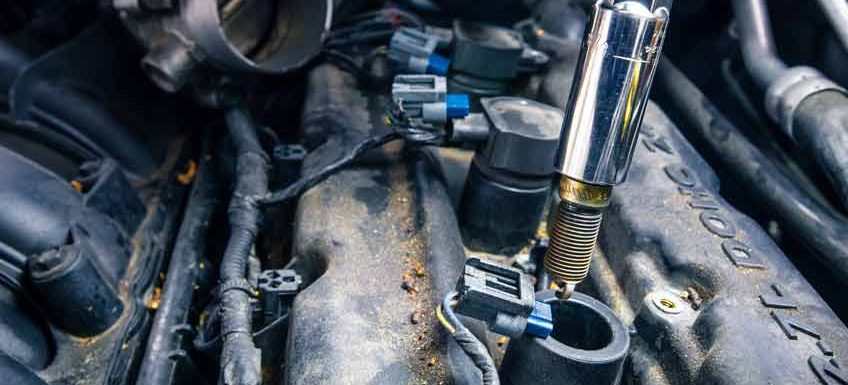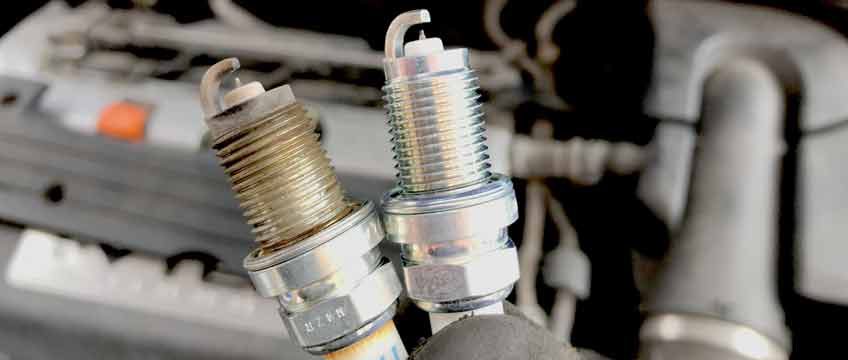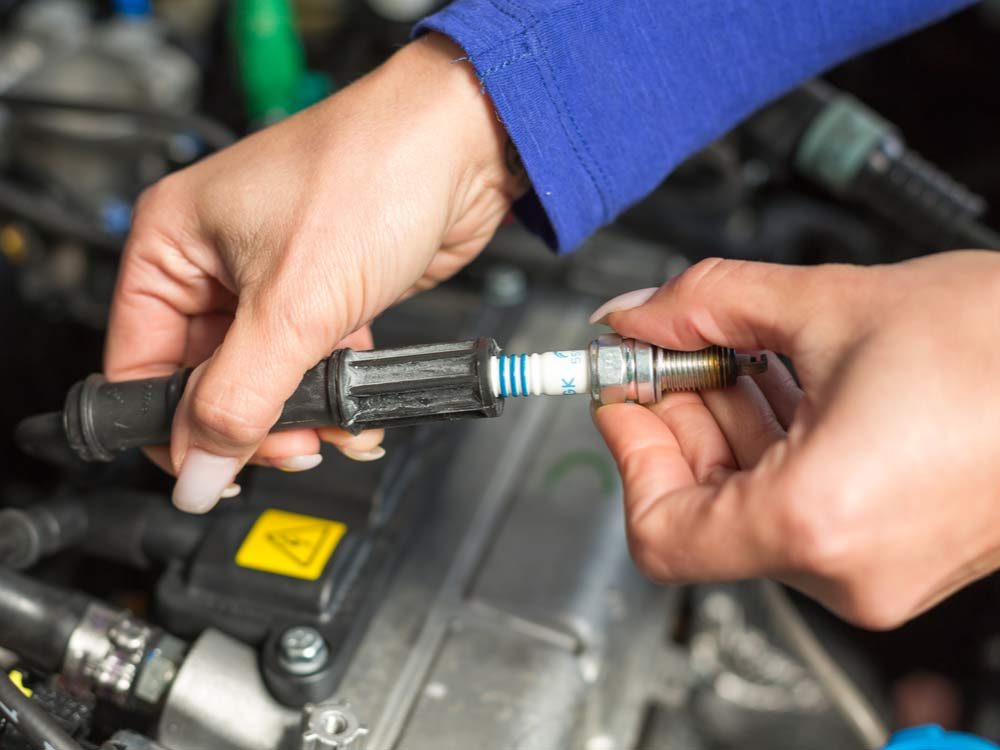
Why Replace Your Spark Plugs?
Spark plugs are the heart of your vehicle’s engine. For maximum fuel economy and peak engine performance, your spark plugs should be replaced every 30 months or 48,000 kilometres. (Here’s more expert advice on how to get better gas mileage.)
Do you have the right tools and equipment?
Before you begin changing spark plugs, you’ll need to have the following at your fingertips:
- Spark plug wrench, or a spark plug socket and ratchet
- Spark plug gap gauge
- Torque wrench
- Rag or brush
- 5/16″ rubber hose of approximately 6″ long
Here are 20 more tools no home mechanic should be without.

How to Remove Spark Plugs
- Allow the engine to cool completely before removing the old plugs.
- Adjust the new plugs to the proper gap beforehand. The correct gap for your engine can be found in the owner’s manual.
- To avoid mixing up the spark plug wires, remove and replace one plug at a time, or use tape to label each wire.
- Carefully remove the spark plug wire from the end of the spark plug by pulling the rubber boot. Don’t pull the wire itself. If the boot sticks, use a twisting motion to pull the boot and plug wire free.
- Clean off the old plug and the area around it with a rag or small brush. This will prevent any foreign material from falling into the cylinder when the plug is removed.
- Remove the plug by turning it counter-clockwise with a spark plug wrench. If necessary, use a small amount of penetrating oil to help remove it.
Find out 13 things you should never do to your car.

Adjusting the Gap of the New Spark Plug
- Set the recommended gap in the new plug with a spark plug gap gauge.
- Insert the proper thickness wire or feeler between the inner and outer electrodes at the tip of the plug.
- When properly gapped, the wire or feeler should slide between the electrodes with a slight drag. If the gap is incorrect, gently bend the outer electrode slightly until the correct gap is achieved (see above).
- Make sure that the outer electrode is centred directly over the inner electrode.
Visually inspect the cylinder head threads…
They should be in good condition and clean. This new spark plug should freely screw into the cylinder head by hand. Any binding of the plug is an indication that there’s a problem. Remove the plug and inspect the threads.
Here are more common car problems—and how to fix them yourself.

How to Install Spark Plugs
- Make sure that the area around the spark plug port is clean. Wipe the seat with a clean rag to ensure proper contact between the new plug and the seat.
- Insert the plug into the spark plug hole by hand and turn it clockwise until it’s snug.
- After installing the plug by hand as far as it will go, firmly tighten it with a spark plug wrench or socket. But remember: don’t over-tighten! You’ll get an accurate torque reading only if the spark plug and cylinder head threads are clean and dry.
- Re-attach the plug wire to the new plug. Use a twisting motion on the boot until it’s firmly seated on the top of the plug.
Here are 100 more car repairs you can do on your own.
For more great tips on how to maintain your car and to find the parts you need, visit NAPA Canada.